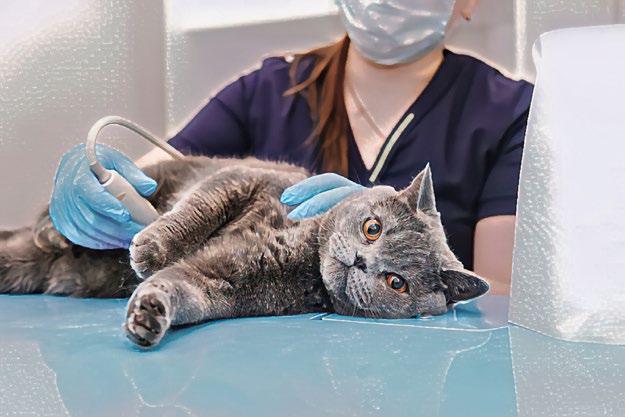What if You Could "C" it Coming?
Cat Talk
|February 2024
“There you are in the ER waiting room, waiting for the vets to assess a queen who is having birthing troubles.

You worry about your girl, you kiss your planned vacation goodbye to cover the expected C-section bill, you pray for a couple of surviving kittens to help offset that bill. . . but in the middle of all of this, we are willing to bet that you’re also asking yourself: “Could I have done something to prevent this?”
You probably won’t like our answer, because it is “very possibly, yes.”
There are definitely several things that breeders can do to help reduce the incidence of emergency C-sections. Unfortunately, the time to put them into practice starts long before you find yourself heading to the ER. Additionally, they take up your time and cost money, two commodities that tend to be in short supply when you are managing a breeding program with multiple females. Finally, sometimes the way to reduce the likelihood of an emergency C-section is to arrange for a scheduled C-section; still an expensive proposition, but typically $500 to $1,000 less than emergency surgery, and in our opinion, a very worthwhile alternative.
Given the disclaimer that we cannot offer you a “magic bullet,” we still believe our recommendations are worth your perusal.
Count the Days. . . Every Day Counts!
First of all, we are not expecting breeders to follow this exact protocol with every single breeding and recognize that it may very well be too costly and/or time-consuming. Three vet appointments, in particular, may be more than your budget can handle. But for firsttime moms or for queens that have had prior birthing problems, it makes sense to consider this approach.
Cette histoire est tirée de l'édition February 2024 de Cat Talk.
Abonnez-vous à Magzter GOLD pour accéder à des milliers d'histoires premium sélectionnées et à plus de 9 000 magazines et journaux.
Déjà abonné ? Se connecter
PLUS D'HISTOIRES DE Cat Talk

Cat Talk
Holiday Aromatics
Are They Naughty or Nice?
3 mins
December 2024

Cat Talk
Feline Photographers Part 2
Social media is rife with pictures of our pets, especially cats.
11 mins
December 2024

Cat Talk
Celebrating the Season With Our Cats
As this writer began work on this project to find holiday stories involving cats, she was amazed to find that there are ELEVEN religious holidays celebrated during December!
4 mins
December 2024

Cat Talk
How Cats Find Their Owners
A month after losing her beloved senior cat, a woman named Amin Diane was parked on a street at night, waiting for her friend.
5 mins
December 2024

Cat Talk
Remembering Willa Hawke
Retired CFA Judge Emeritus Willa Hawke passed away August 2, 2024 in Lake Kiowa, TX at the age of 88. She had been a judge for over 50 years before her retirement in 2016.
1 mins
December 2024

Cat Talk
UP CLOSE AND Purr-sonal
Thoughtful... Caring ... Giving ...Helpful... Committed.
4 mins
December 2024

Cat Talk
DON'T PUFF AROUND PUFF!
THE EFFECT OF SECONDHAND SMOKE ON CATS
5 mins
December 2024

Cat Talk
Fluffy Coats
AND HOW TO CARE FOR THEM
7 mins
December 2024

Cat Talk
Feline Agility?
I Thought Agility Was For Dogs!
7 mins
December 2024

Cat Talk
Come Fly With Me!
TIPS ON NAVIGATING AIRPORT SECURITY WITH YOUR CAT
4 mins
December 2024
Listen
Translate
Change font size

